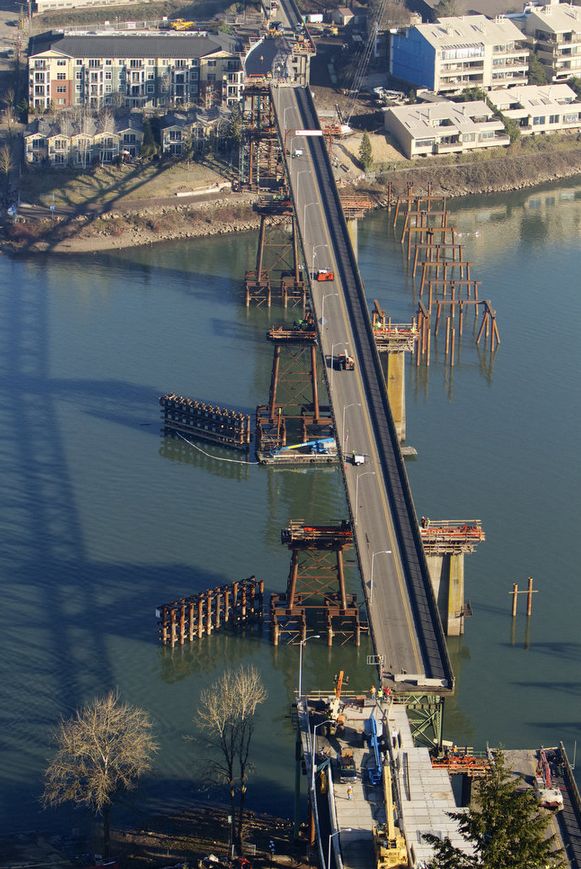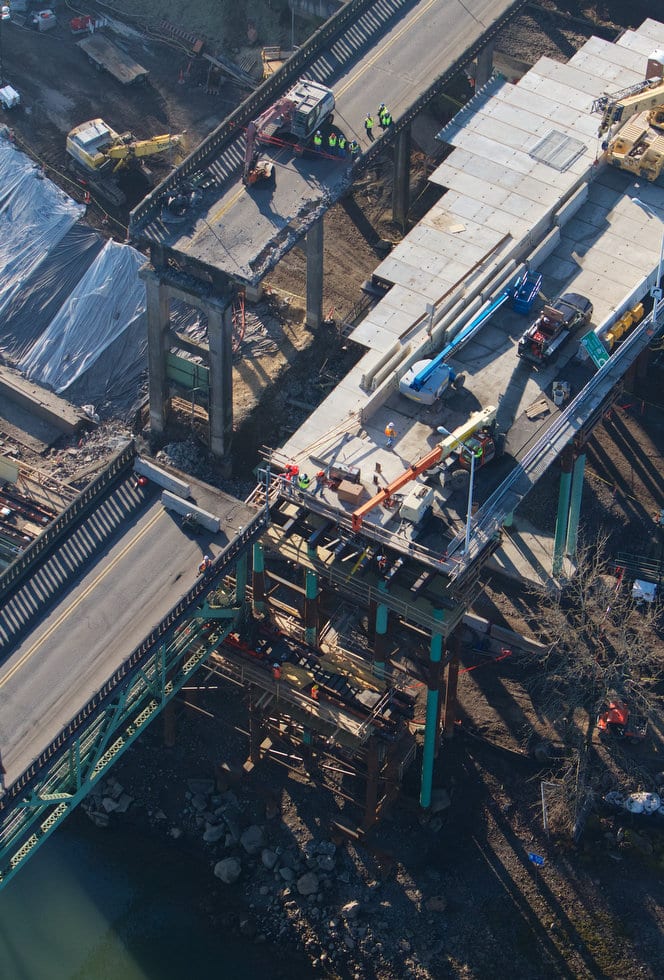The 1971 feet (601 m) long and 75 feet (23 m) wide Sellwood Bridge in Portland, Oregon, was built in 1925. Due to cracks on the bridge and public safety issue, engineers decided to repair the 1,100-foot, 3,400-ton truss of that bridge. To do so, they had to move that portion. Recently, engineers have moved the entire bridge without cracking it.
The Sellwood Bridge, designed by Gustav Lindenthal, was a truss bridge that spans the Willamette River in Portland, Oregon, in the U.S. It was Portland’s first fixed-span bridge. It linked the Sellwood and Westmoreland neighborhoods of Portland on the East side with Oregon Route 43/Macadam Avenue on the West side. The bridge is owned and operated by Multnomah County.
By the 1980s, cracks started to appear on the bridge and for this the bridge’s mid portion (1,100-foot long span) gradually started becoming incapable for taking loads of more than 30,000 vehicles or 32 tons of weights that pass the bridge daily. On January 2004, engineers found that portion of Sellwood Bridge was able to take load a maximum 10 tons. After long discussions and planning, Multnomah County commissioners decided to repair that portion.
On Saturday, January 19, in just 14 hours engineers flawlessly moved the entire Sellwood Bridge. Engineers built tracks, covered with Teflon pads and doused with liquid soap to make them slippery between the Sellwood’s old and new locations. Then forty 150-ton hydraulic jacks picked up the bridge and placed it on ski-like steel beams that could slide inside the tracks. Finally, a second set of jacks pushed the bridge inch by inch to its new position. Here’s a video capturing the action:
Right now, engineers are constructing a replacement bridge. The new bridge is expected to open in 2015, after which the old Sellwood will be scrapped.
Source: PopSci
Image Courtesy: Randy L. Rasmussen/The Oregonian
[ttjad keyword=”camcorders”]




